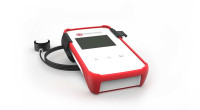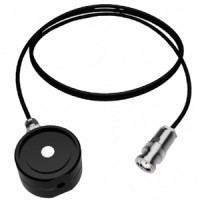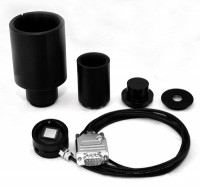Este producto ya no se fabrica. Es posible que queden existencias. Consulte las alternativas que figuran a continuación en "Productos similares" o póngase en contacto con nosotros directamente.
Productos alternativos para este producto descatalogado:
VL-3701
Detector head for the measurement of photopic illuminance in Lux [lx]
- f1' ≤ 3 %
- f2 ≤ 1.5 %
- 0.5 nA/lx
- 20 mm height
- for the usage with Optometers and amplifiers, calibration certificate
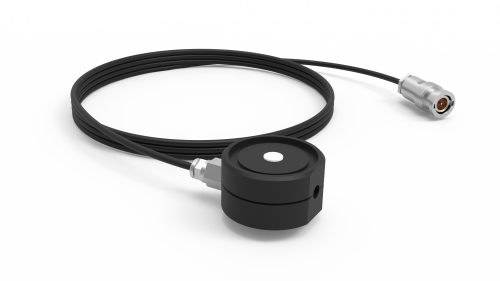
Illuminance is the most frequently made measurement within general and specialist lighting applications. The two most important qualities required of a high precision illuminance detector are a spectral responsivity that is very well matched to the ideal V(λ) photopic curve and a spatial response that provides cosine correction. The VL-3701 meets the high standards of DIN Class A classification for both these parameters.
Photometric detectors offer a convenient solution for measuring illuminance (lux) simply, quickly and over a very wide dynamic range. When suitably calibrated, additional photometric quantities including luminance (cd/m2), luminous flux (lumens), and luminous intensity (cd) can be measured in conjunction with accessories such as lenses, integrating spheres and goniometers.
Product description
VL-3701 illuminance detector
The model VL-3701 is a high quality photometric detector calibrated for the measurement of illuminance and has proven itself over many years in numerous demanding industrial and scientific applications. The detector can be connected to all Gigahertz-Optik measuring devices and transimpedance amplifiers.
For the precise measurement of illuminance, the VL-3701 detector is constructed with a 7mm diameter diffuser that provides a cosine corrected field of view (Figure 2) and a photometrically corrected photodiode. The specifications of both meet the high requirements of quality class A of DIN 5032 part 7.
To ensure that this detector head is appropriate for the widest range of source spectra including most traditional lighting technologies and white light LEDs, Gigahertz-Optik pays particular attention to the implementation of the spectral photometric sensitivity V(λ) (Figure 1) in accordance with the CIE standard. A multi-layer optical correction filter from our own production is incorporated. This takes into account the spectral sensitivity of the photodiode and the spectral transmission of the input optics. The entire manufacturing process is subject to the quality management of the Gigahertz-Optik measuring laboratory. Quality assurance includes an individual calibration of the relative spectral sensitivity of each detector.
The high-quality Si photodiode offers a strictly linear relationship between the measurement signal and the illuminance in the range from pico-amps (10-12 A) to one milliamp (10-3 A). In connection with the Gigahertz-Optik P-9710 meter (Figure 3), a linear measuring range of up to 330000 lx with a resolution of better than 0.001 lx.
The robust detector housing is made of aluminum and offers a 2 m long, highly flexible connection cable. The threaded hole on the side or the circumferential V-groove on the front side enable the detector to be securely attached and enable it to be used with front tubes and optics. The detector’s low profile of only 20 mm allows its use even in restricted spaces. The detector can also be offered in a splash-proof version.
Calibration
Meaningful measurements in absolute units such as illuminance in lx require the calibration of a measuring device with traceability to National Metrology Institute (NMI) standards. The Gigahertz-Optik calibration laboratory has been accredited since 1993 by the PTB (Physikalisch-Technische Bundesanstalt) and the DAkkS (the German national accreditation body) for the calibration of spectral sensitivity and spectral irradiance. Since then, our factory calibrations have been based on the calibration standards and quality management of the accredited calibration laboratory. Thus, the factory calibrations of Gigahertz-Optik already offer the highest level of traceability and have been accepted as a quality standard by customers all over the world for many years.
To meet the particular requirements of some industrial sectors, part of the calibration laboratory is accredited by the DAkkS as a test laboratory according to DIN EN ISO / IEC 17025. For this reason, in addition to the factory certificate, Gigahertz-Optik can optionally offer a DIN EN ISO / IEC 17025 certificate for the detector VL-3701 in connection with a measuring device.
As standard, the VL-3701 detector is calibrated for both its illuminance responsivity and relative spectral responsivity.
Measuring device
The VL-3701 detector can be used with all of the Gigahertz-Optik measuring devices (optometers) and transimpedance amplifiers. The connector type of the detector must be selected to match the signal input connector of the measuring device.
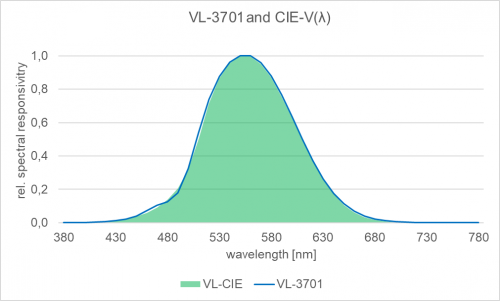
Typical spectral responsivity of the VL-3701 detector.
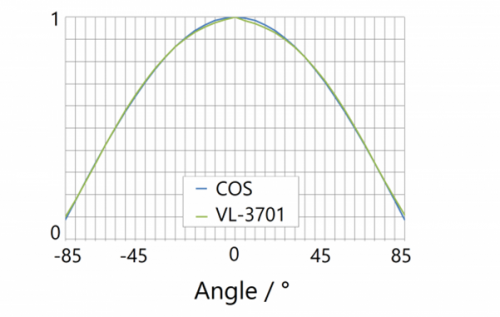
Typical field of view with precise cosine correction
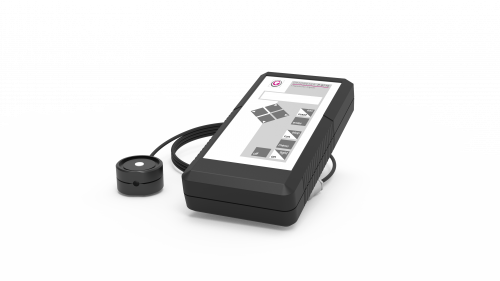
P-9710 Portable measuring device with VL-3701-2 detector for illuminance (lux) measurements
Productos similares
